TOP 5 CLICHÉS ABOUT SPECTACULAR ADVERTISING
CONTENTS
Spectacular advertising, often referred to as large-format OOH (Out-of-Home), is a medium that gives rise to many preconceptions. Between preconceived ideas and stereotypes, it’s time to dispel certain clichés about spectacular media, such as illuminated advertising and giant banners. Get ready to discover the Top 5 of these clichés and to debunk them one by one.
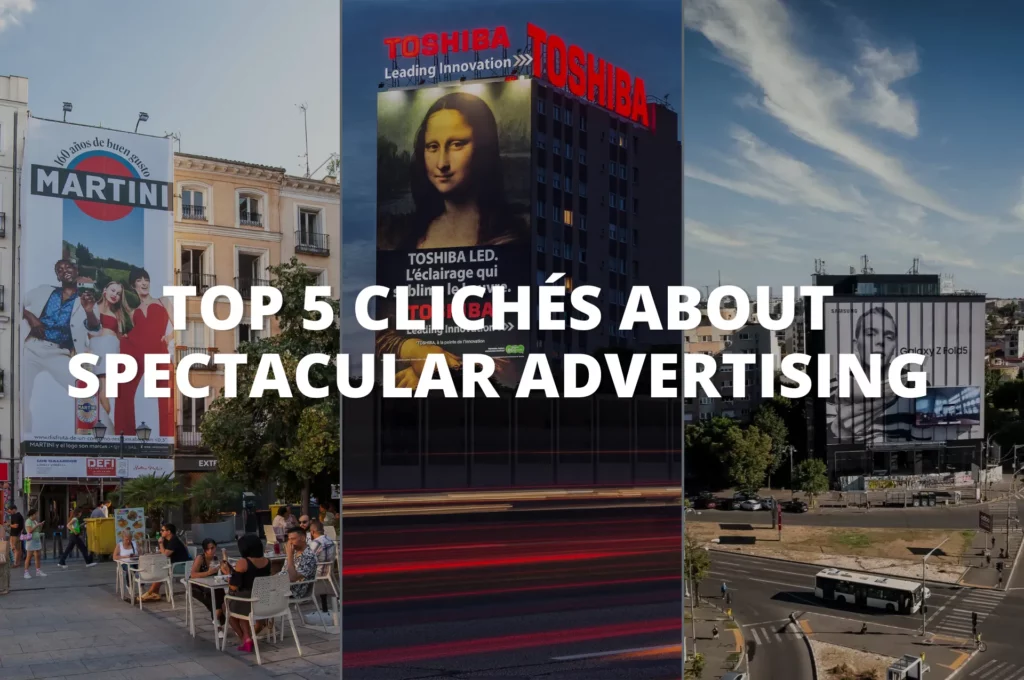

Why tackle this burning subject? The interest of this article lies in the need to demystify the prejudices surrounding large-format OOH. In 2023, the Dentsu agency carried out the Out-Of-Home Consumer Survey, which provides a global understanding of opinions and preconceptions about outdoor advertising. Interesting findings include the idea that “with teleworking, nobody goes out anymore”, when in fact 72% of teleworkers go out every day. In short, if you’re interested in this study, we’ll let you look at it for yourself. Here, we will concentrate on the niche media of spectacular advertising: illuminated advertising and spectacular banners.
ILLUMINATED ADVERTISING : illuminated advertising refers to a luminous logo installed on the roofs of buildings located along busy roads. Unlike traditional signs, this form of outdoor advertising is generally associated with residential buildings. It often displays a company’s logo, name, and slogan, and is specially designed to be visible both day and night. Its main purpose is to reinforce a brand’s positioning and generate long-term visibility and awareness.
SPECTACULAR BANNER : a large-scale advertising structure, often covering hundreds of square metres, designed to be placed in an urban environment. It can be installed temporarily or permanently, usually on special structures or scaffolding. These canvases are used by brands to communicate in a high-impact way at specific events. They offer maximum visibility and enable a promotional or informative message to be conveyed effectively to a target audience.
Cliché no. 5: large-format OOH isn’t creative
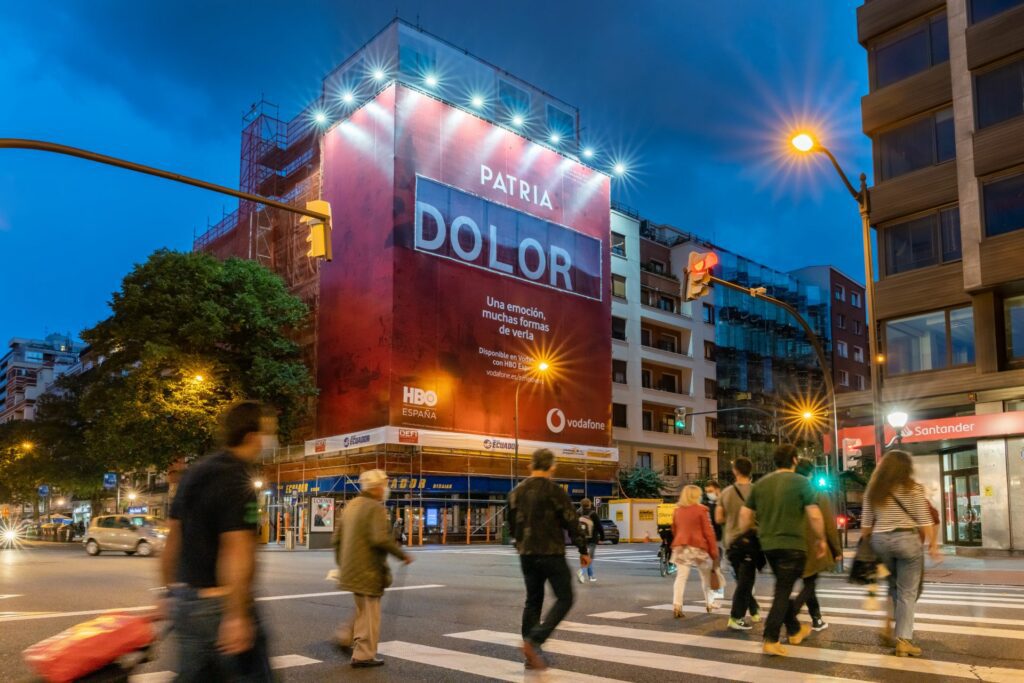

Let’s put an end to this preconceived idea. Whether it’s illuminated advertising or a spectacular canvas, the extraordinary dimensions of these media allow for freer creativity than with other devices. There are so many options! For example, with event banners, it’s entirely possible and recommended to create content that generates emotion and engagement, thanks to a personalised message, a geographical target, or additional elements.
Additional elements? What are we talking about? Everything to do with deformatting, i.e. 2D and 3D elements that can be added to the banner to add a unique, wow factor; backlighting, i.e. LEDs that can be integrated into the banner to light up your visuals and bring it to life. Or a QR code that gives your audience an experience that goes beyond the simple visual of banners. It’s also possible to create a filter to bring your canvas to life and create a phygital experience that younger generations love.
To find out more about creative advertising banners : it’s over here.
Large-format OOH also means you can create a unique visual in paint. Whether on top of a canvas or directly on the wall, it’s an opportunity to bring your communication to life over one or more months and surprise your audience. But it’s also through illuminated advertising in original colours that your logo will live on differently between day and night. In the end, creativity is only limited by regulations, the rest is up to you!
Cliché no. 4: outdoor advertising is not modern
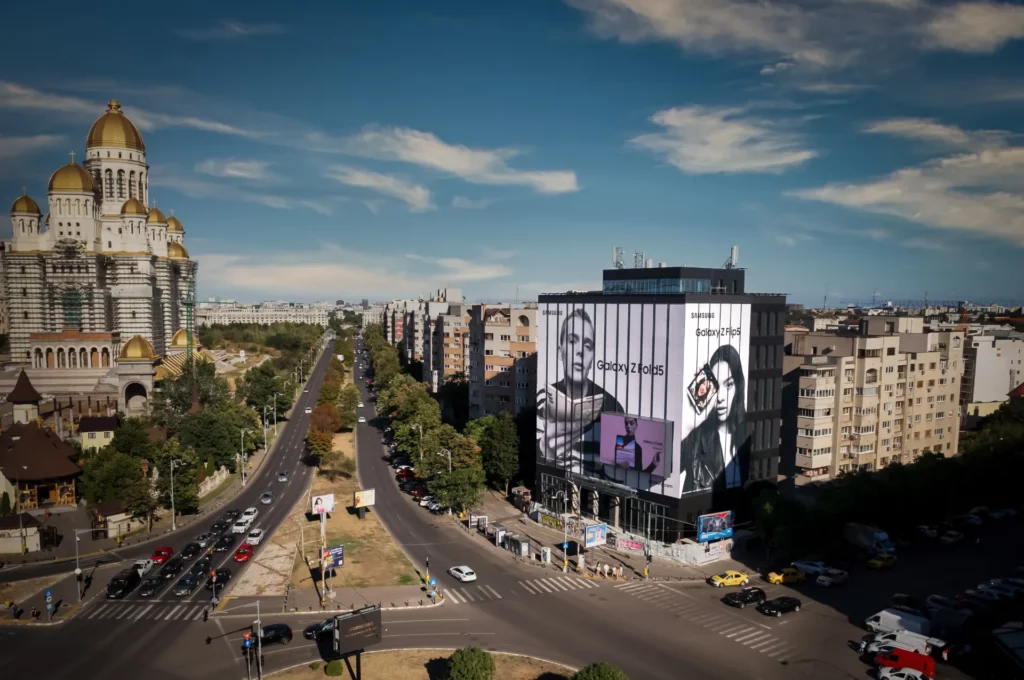

Although large-format outdoor advertising is an old, traditional medium, it has evolved with the times. It has evolved in terms of formats. For example with giant DOOH screens that can be integrated with other devices such as window decals or advertising banners.
But also through quality and associated technology. At DEFI, for example, we have replaced all our neon lighting with LED lighting (before regulations made it compulsory) in order to reduce environmental problems (heat loss, danger of products inside, etc.) but also for reasons of quality and performance. In particular, LEDs last longer and provide better-quality lighting.
And finally, we return to the previous point: creative tools, whether for the web or for advertising, help to create a modern look and generate impact.
Cliché no. 3: there is no ROI in spectacular OOH
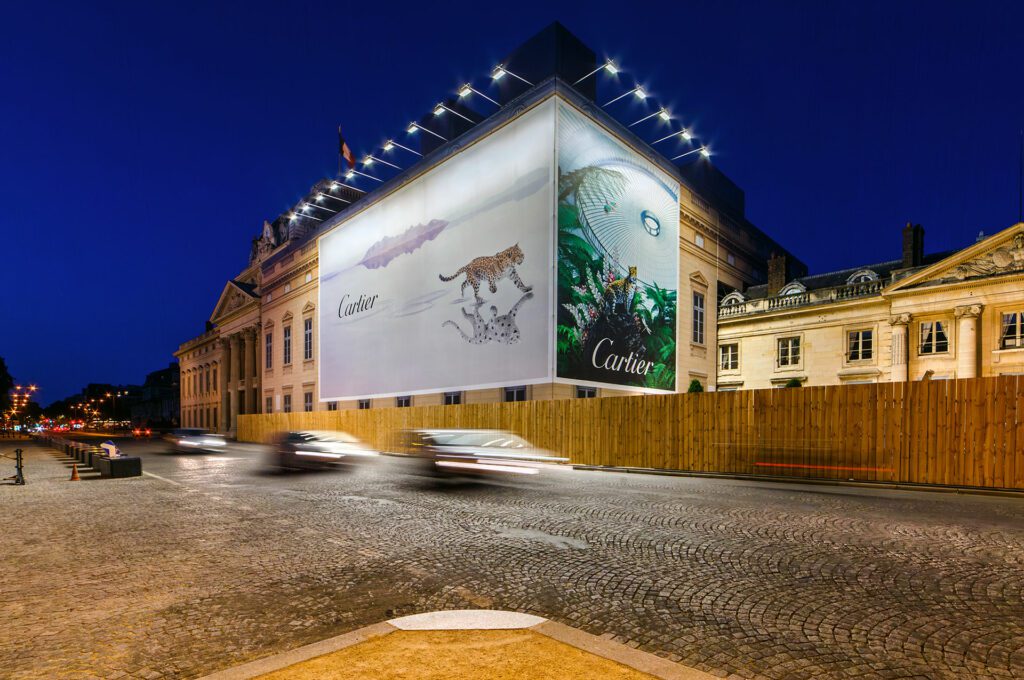

It’s not true! On a more serious note, we often hear that we don’t get any measurements from those media. Obviously, it’s impossible to obtain as many KPIs as for a web campaign, or even a DOOH campaign in the underground or in a station, because our media are not in direct proximity to consumers. On the other hand, it is entirely possible to obtain data on audience typology, traffic or potential contacts (i.e. impressions).
In addition, by carrying out a study on a specific campaign, it is possible to obtain other metrics, such as the recall rate, the impact generated by the advertising on consumer intentions, brand sentiment and awareness.
We carried out this type of study a few years ago on one of our illuminated advertising systems, and we were able to determine that illuminated advertising can generate +30% awareness in a specific geographical region. Or that a brand’s recall rate is increased (x 13 for the device in question), enabling the brand to work on top-of-mind.
Finally, let’s not forget that large-format OOH is generally an effective complement to a broader media plan that forms part of an overall long-term strategy.
Cliché no. 2: spectacular advertising pollutes


The issue of pollution is a complex one. Like all media, large-format OOH has an impact on the environment, from production to the end of the medium’s life. However, for several years now, efforts have been made to reduce this impact.
In particular, on the canvas side, it is possible to create PVC-free devices that optimise the life cycle and impact on the carbon footprint. As far as end-of-life is concerned, DEFI automatically recycles all fabric devices (with or without PVC), thanks to a partnership with Veolia, which transforms and reuses these materials. But it’s also possible to reuse your advertising banner campaigns, in an upcycling context, to mark the event, to use them as goodies to be redistributed later or to decorate your offices with furniture and upcycling elements.
When it comes to illuminated advertising, we use LED technology, which is renowned for its low energy consumption. They have a long lifespan, so the carbon footprint of their production is reduced. What’s more, in order to optimise the system in practical terms, it is entirely possible to install photovoltaic panels for neutral consumption and thus optimise our carbon footprint.
To find out more about illuminated advertising and its environmental impact: it’s over here.
Finally, it should be noted that the method of production plays a role! At DEFI, we try to keep our production as local as possible. For example, in France, the canvases are produced in Normandy and, depending on the illuminated advertising, production is split between France and other European countries, using shared transport to optimise journeys.
Cliché no. 1: spectacular advertising is pointless
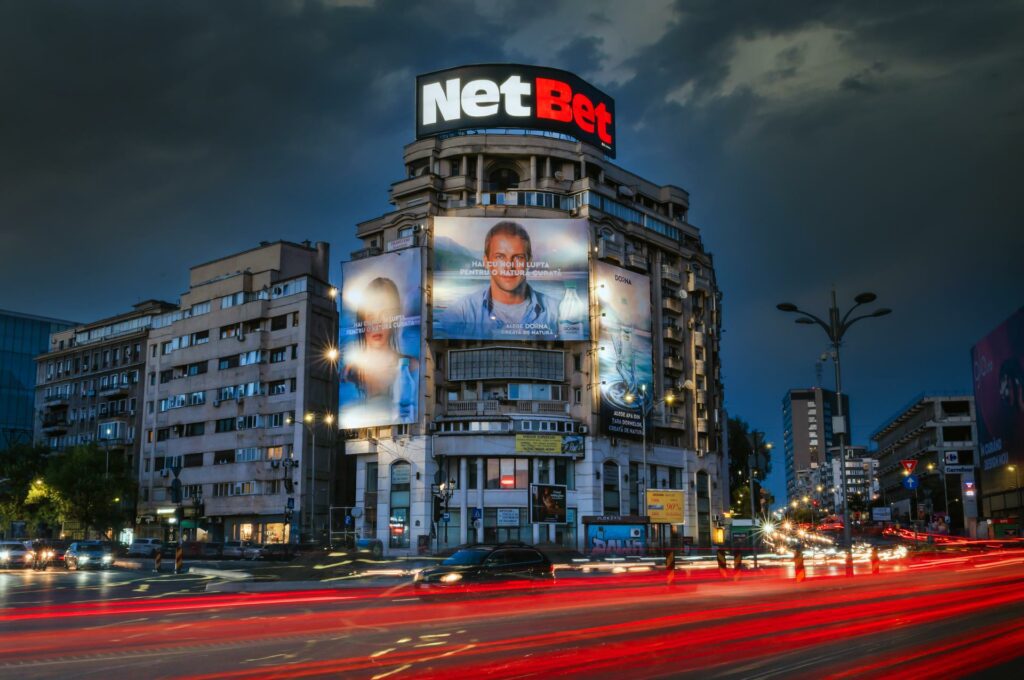

Ah, there’s the classic cliché that deserves a good dose of revelation! It’s high time we got rid of this preconceived notion.
Large-format OOH has many benefits for both society and brands. On the social front, it plays a vital financial role in the preservation of historical monuments, sometimes even financing up to 100% of restoration costs. It also actively supports social housing through the royalties generated by permanent pitches. In other words, it helps to improve the living environment and the well-being of citizens.
For advertisers, the benefits are just as remarkable. Large-format OOH makes it possible to create invaluable proximity with the public, to become anchored in the collective memory over the long term, to carry out geographically targeted advertising campaigns, to achieve a guaranteed impact and to create a real event around the brand. It also considerably enhances brand awareness and image. In short, large-format OOH is much more than just a cliché; it’s a powerful medium that enriches our urban environment and offers brands an exceptional platform for expression.
If you don’t have time to read it all, here’s the key information from the article:
- Cliché no. 1: spectacular outdoor advertising serves no purpose
- Large-format OOH offers social benefits by funding the preservation of historical monuments and supporting social housing through permanent site fees.
- For advertisers, it offers lasting proximity, geographically targeted campaigns, guaranteed impact, enhanced brand awareness, and improved brand image.
- Cliché no. 2: large-format outdoor advertising pollutes
- Efforts are being made to reduce environmental impact, in particular by using PVC-free devices and photovoltaic panels, and by recycling advertising media.
- LED technology consumes very little energy, which reduces the carbon footprint.
- Cliché no. 3: there is no spectacular ROI in OOH
- Although there aren’t as many KPIs as on the web, large-format OOH makes it possible to measure audience typology, traffic, impressions, recall rates, impact on consumer intentions, brand awareness, and much more.
- It is an effective complement to an overall long-term media plan.
- Cliché no. 4: outdoor advertising is not modern
- Despite its age, large-format OOH has evolved with modern formats, LED technologies, and creative tools for high-impact campaigns.
- Giant DOOH screens and special devices are examples of modernisation.
- Cliché no. 5: large-format DOOH is not creative
- On the contrary, the size of these spectacular media offers limitless creativity, with 2D and 3D elements, backlighting, QR codes, phygital filters, and live painting possibilities.
- Creativity is only limited by regulations.
More articles
◀︎
▶︎